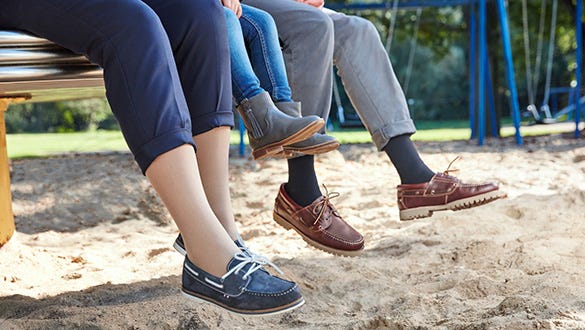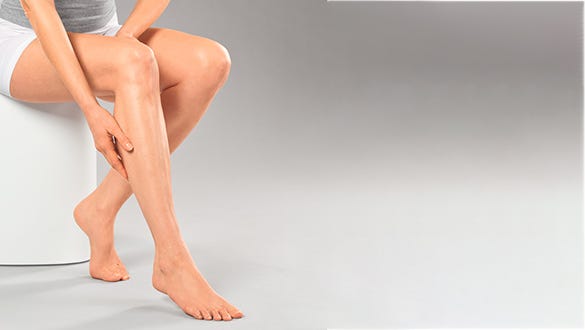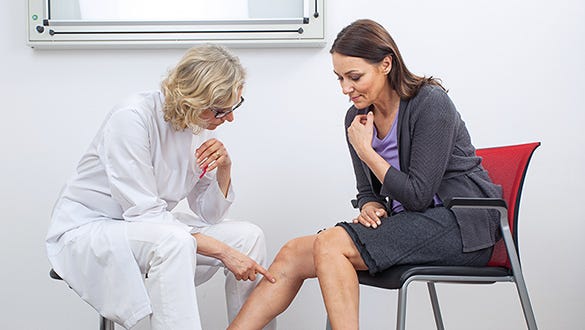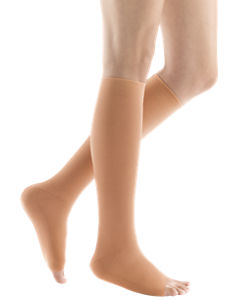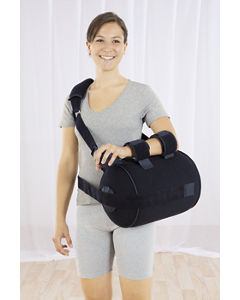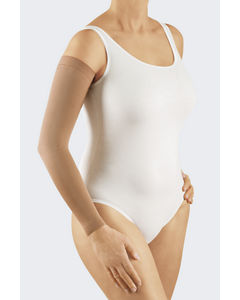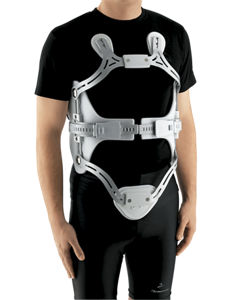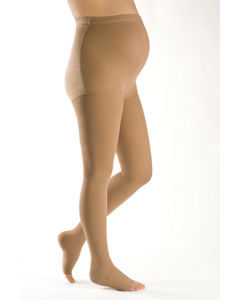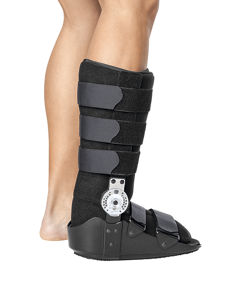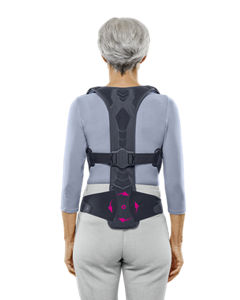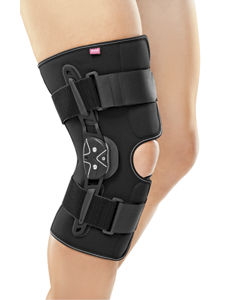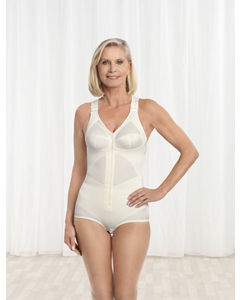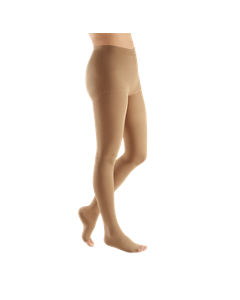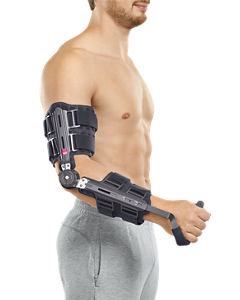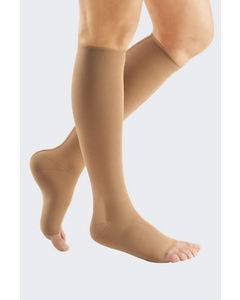- Free First Class Delivery
- Buyer Protection
- Secure Online Shopping
- Healthcare Professional? Click here
Vein exercises
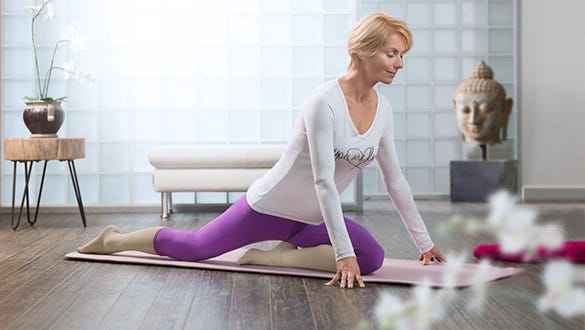

Categories
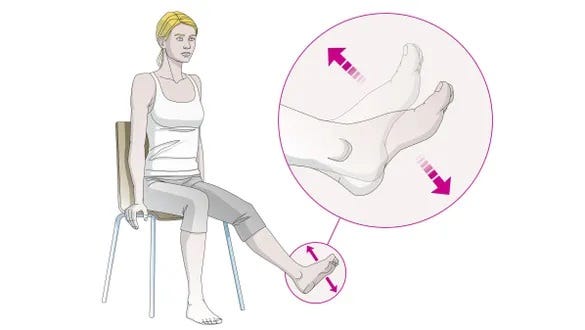

Whether you’re travelling by bus, train or plane your movement is limited. But there is something you can do to help your veins and to keep your blood pumping around your body. A few simple exercises while sitting in the most cramped spaces is possible and really does do your legs a favour.
Walk a lot but stand still as little as possible
Vein exercises and particularly sports, keep the veins pumping: the heart pumps our blood into the body through the arteries. Once the blood has been distributed everywhere this way, it flows back up through the venous system. However, our heart alone isn’t strong enough to pump the return flow up through our legs, so the leg muscles take over and pump the veins by squeezing them. This is called the calf muscle pump. Whenever the muscles in our calves and thighs contract, they squeeze the veins and press the blood upwards back towards the heart. Valves in the veins ensure that the blood does not flow backwards. If we sit or stand still too long, the blood is not transported sufficiently. Those of us who stand and sit for long periods of time, risk an inefficient or poor return transport of the blood back from the legs. Although the consequences are merely unpleasant at first, this can develop into venous disease over time.
Consequences of insufficient physical exercise:
- Tired and heavy legs
- Swollen ankle and legs
- Venous inflammation
- Varicose veins
- Leg ulcers
The best form of prevention of venous disease is by movement and physical exercise. By keeping on the move, even those of us who have already had varicose vein surgery, can ensure that no new varicose veins form. People who spend most of their time sitting down should make the effort to stand up and move to engage their leg muscles. Another important rule is walk a lot and not stand still for long. Sports such as cycling, swimming and jogging are also good for the veins and the muscle pump. Moreover, the blood flow can be improved by specific vein exercises.
Rolling your feet
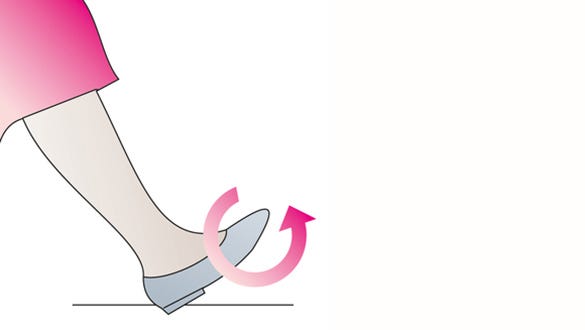

Lift up the tips of your toes, your heels stay on the floor. Roll your feet around alternating between clockwise and anticlockwise.
Stand on tiptoe
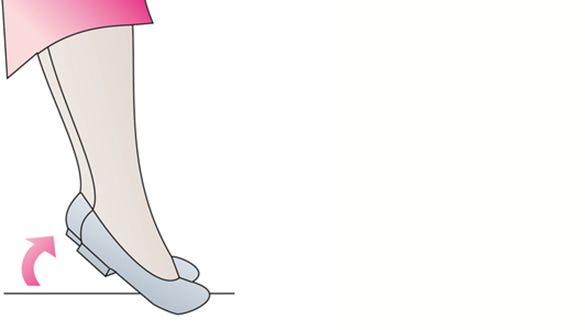

Stand with both feet on tiptoe at the same time, i.e. you lift your heels up and keep the balls of your feet on the ground.
Pulling your toes upwards
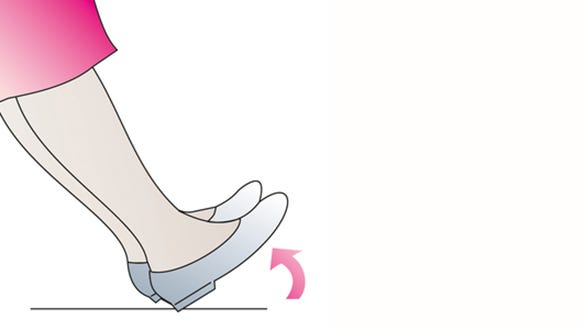

During this exercise, the heel stays on the floor and you lift the tips of your toes.
Rocking your feet
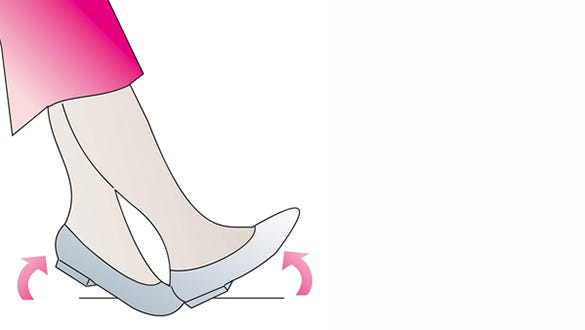

Rock your feet from heel to toe alternately.
Other examples of exercises
- Lie on your back and pretend to cycle with your legs in the air.
- Pull one knee right up to your body while the other leg stays straight.
- Point one leg up at the ceiling and hold it in the hollow of the knee. The other leg remains flat on the floor.
- Sit on the floor with your legs out straight and support yourself with your hands behind you. Lift up one leg up straight and rock your foot to and fro at the ankle.
Tips for everyday living
- Move around as often as you can.
- Change your position more often, if possible put your feet up - (e.g. when on your smart phone).
- Stick to a light, balanced diet.
- Lose any excess weight.
- Wear loose, comfortable clothes.
- Choose flat, comfortable shoes – wear heels on the odd occasion rather than every day.
- Shower your feet regularly with cold water. Alternating hot and cold showers strengthens the connective tissues.
- Plan regular 10-minute sessions of vein exercises into your daily routine.

